In Bergamo’s Magnificent Valleys, art, nature and history intertwine to give you days of wonder.
In the Seriana Valley, the ancient village of Clusone holds unique monuments: traverse its historic center following the itinerary we suggest, and walk the cobblestone streets that once saw illustrious figures such as Giuseppe Verdi stroll through, visiting ancient churches, museums and an astronomical clock that has been working flawlessly since 1583.
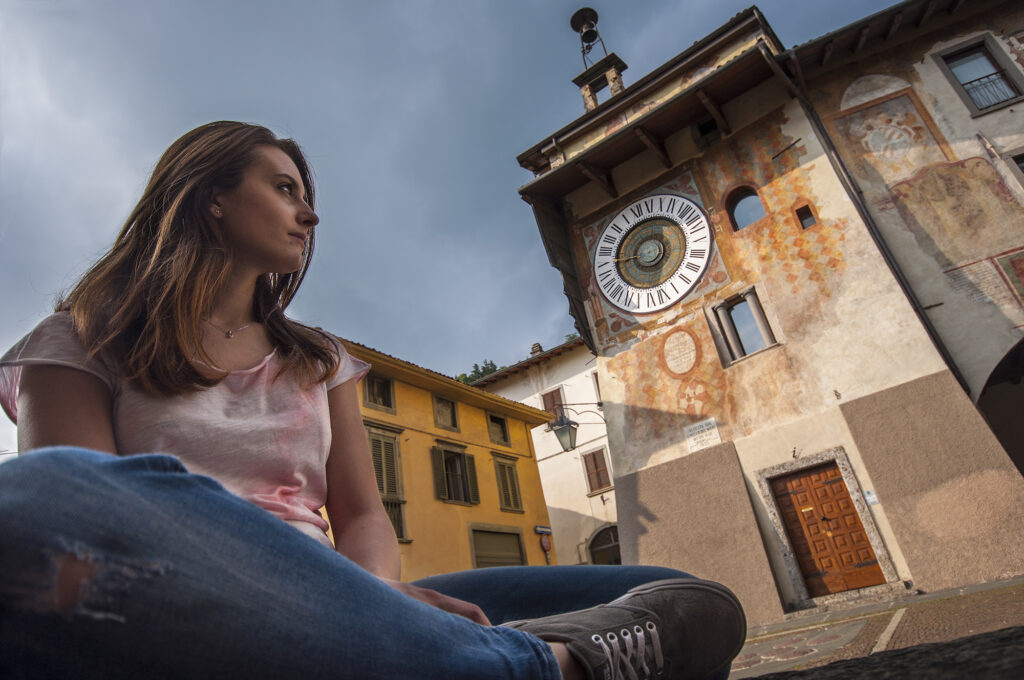
Clusone
The route is equipped with information accessible to all, also to people with visual and hearing disabilities, thanks to the new signage created as part of the S.T.A.I. Project (2023) in collaboration with Promoserio, the local development agency dedicated to promoting tourism in the Seriana and Scalve valleys.
At each point of interest you will find descriptive panels, equipped with qr codes that will allow you to learn more about the characteristics and events of each monument, in text format, audio guides, LIS videoguides for the hearing impaired, audio descriptions for blind people, as well as augmented reality animations dedicated to children.
S.T.A.I. – Services for Accessible and Inclusive Tourism – is a project funded by the Presidency of the Council of Ministers and the Lombardy Region, with the aim of proposing a model of inclusive tourism to be developed in the lake and mountain territories of Bergamo and Brescia.
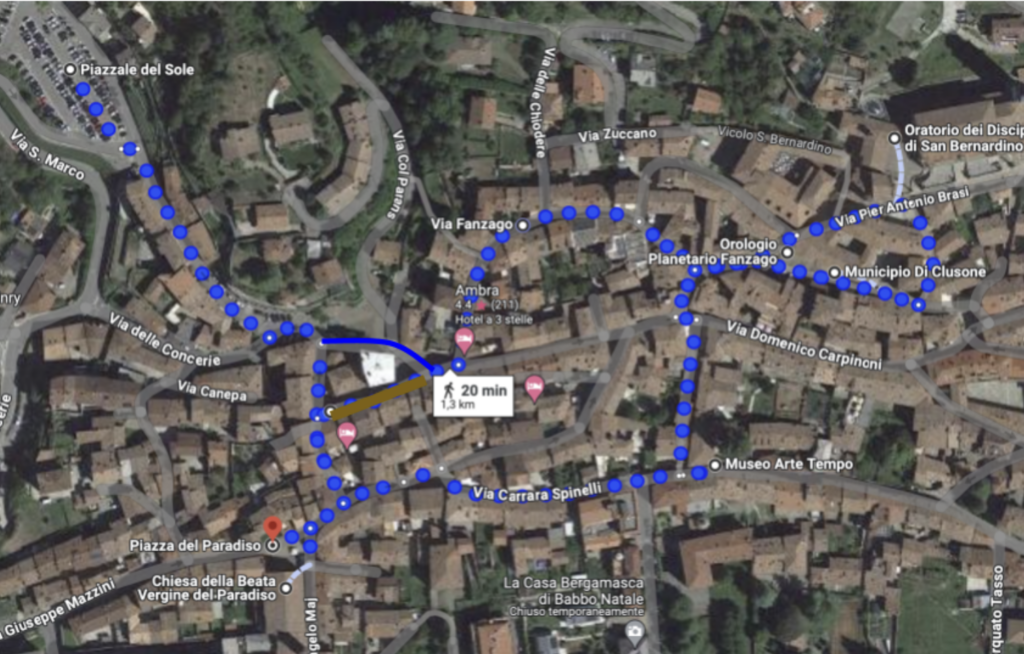
You can easily reach Clusone by driving along the SS671 state road, which connects Bergamo to the Seriana Valley.
When you arrive in town, you will find ample and convenient parking in the upper part of the center, at the Piazzale del Sole 33 St. Mark’s Street.
Once parked, leave the square behind and skirt the houses with terraced gardens, continuing on Via San Marco to enter the built-up area, among typical bars and stores.
After about 100 meters, at the fork, continue straight ahead and then turn right onto Via Marconi.
At the end of the street, turn right again and you will find yourself in the small but picturesque Piazza del Paradiso.
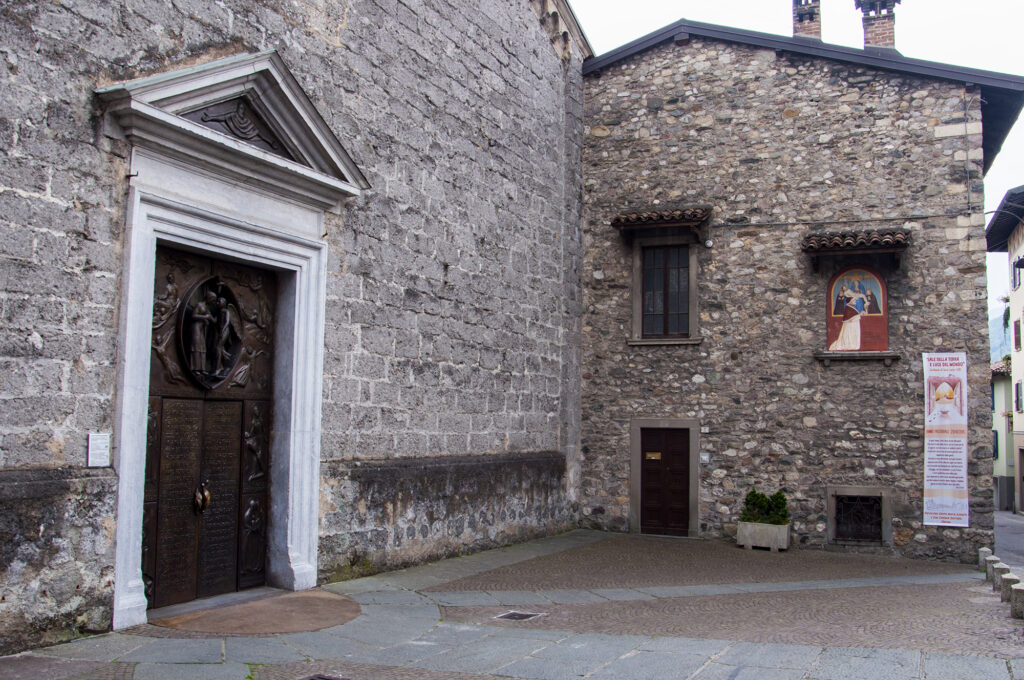
Here you meet the first historical point of interest: the Church of the Blessed Virgin of Paradise, erected in 1495.
Inside the building, externally simple with its facade of local stone, vividly colored works are preserved; the most significant is undoubtedly the 15th-century fresco depicting the Our Lady of Sorrows, to which the town is very attached.
Not to be outdone are the altarpieces painted by the Clusonese Carpinoni, Cifrondi, Galizzi and Brighenti, flanked by the Allegories of Faith, Hope and Charity by the sculptor Andrea Fantoni (17th-18th cent.).

To continue, turn your back to the church, retrace your steps for a stretch, and reach the small Piazza Pietro Antonio Uccelli.
Continue straight ahead, keeping to the right, to take Carrara Spinelli Street.
After 140 meters you will reach two more important monuments: the Museum Art Time and Palazzo Carrara Spinelli.
The former, housed in the rooms of the 17th-century Palazzo Marinoni Barca, display works by mainly Clusonese artists, donated by the Sant’Andrea, Querena, Trussardi Volpi and Nani families.
Among the most valuable works, don’t miss the canvases by Bergamo-born Giovan Paolo Cavagna and Palma il Giovane (from the Suardo collection) and two sculptures by Giacomo Manzù, who lived in Clusone during the war period.
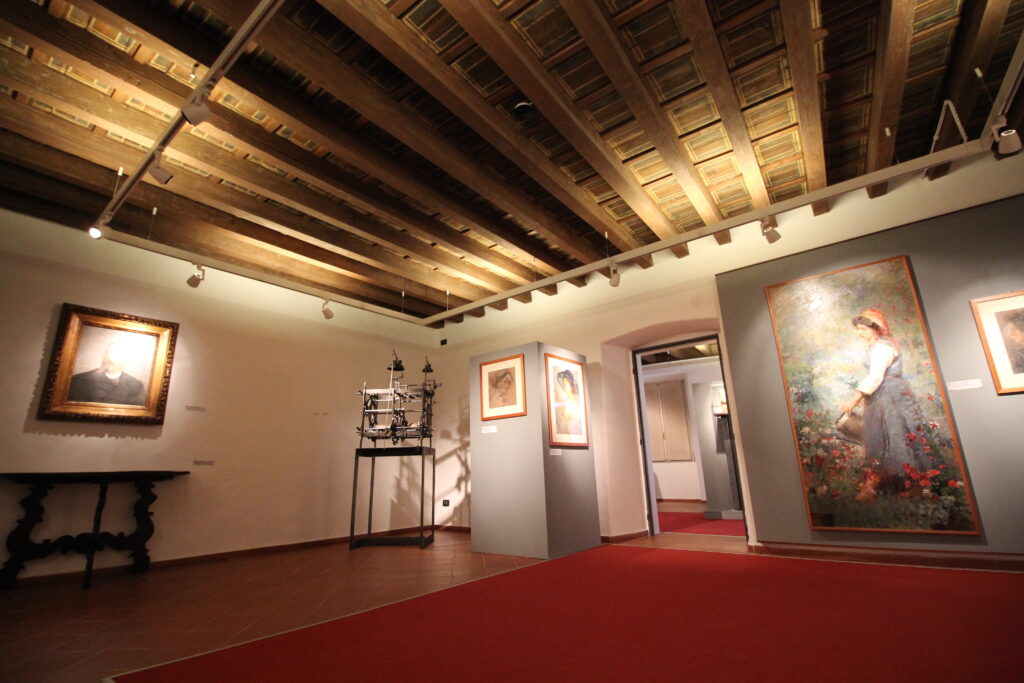
In the adjacent garden, the Blue Ribbon Park, stand three centuries-old redwoods included in the list of monumental trees of Italy.
The perfect place for a relaxing break!
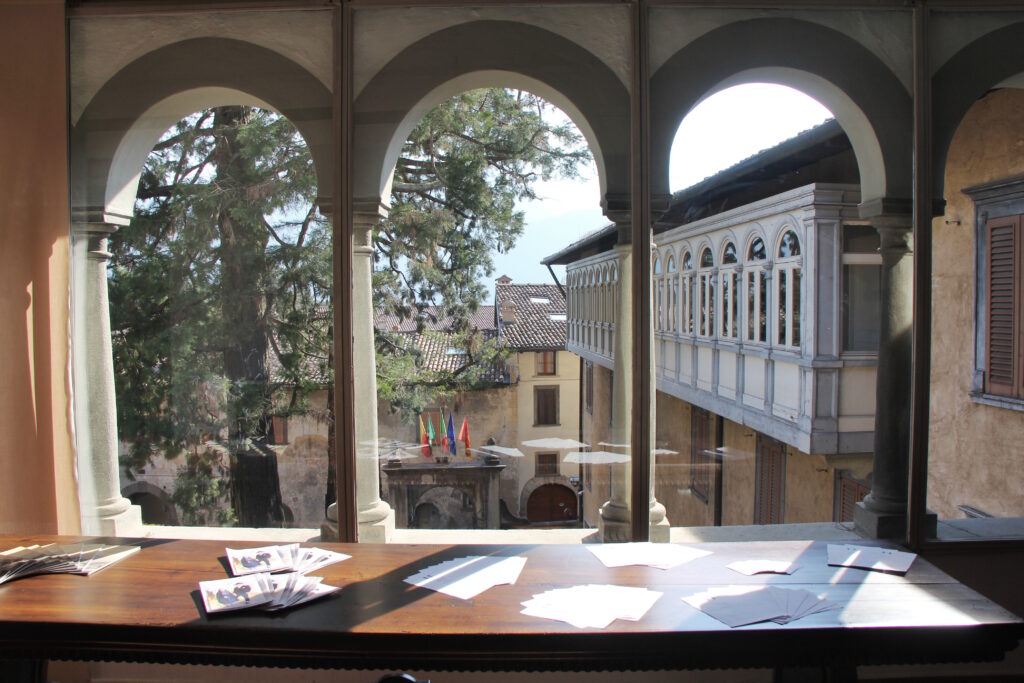
Opposite stands Palazzo Carrara Spinelli, long owned by the family of the same name, which became a cultural salon in the 19th century thanks to Countess Clara Carrara Maffei and hosted such illustrious figures as the composer Giuseppe Verdi and the literary politician Carlo Tenca.
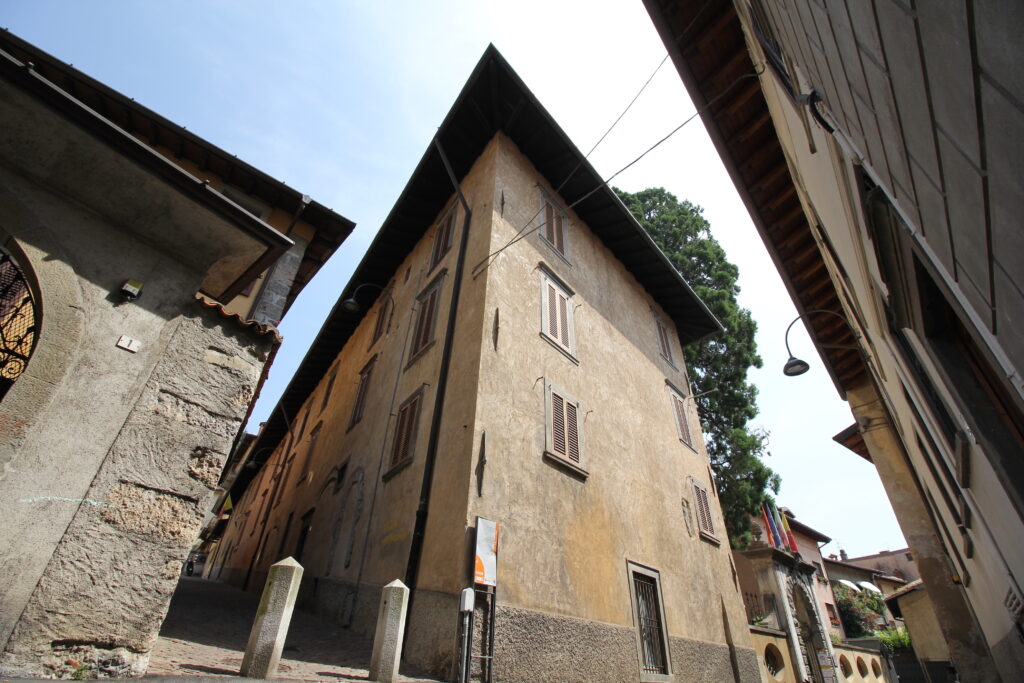
To continue the route, take the passageway to the left of the museum and walk up the slight incline to Marinoni Square.
At the end, at the intersection, continue straight ahead to reach Clock Square.
Questo è il cuore della città – e una passeggiata a Clusone non può non far tappa all’ Fanzago Clock!
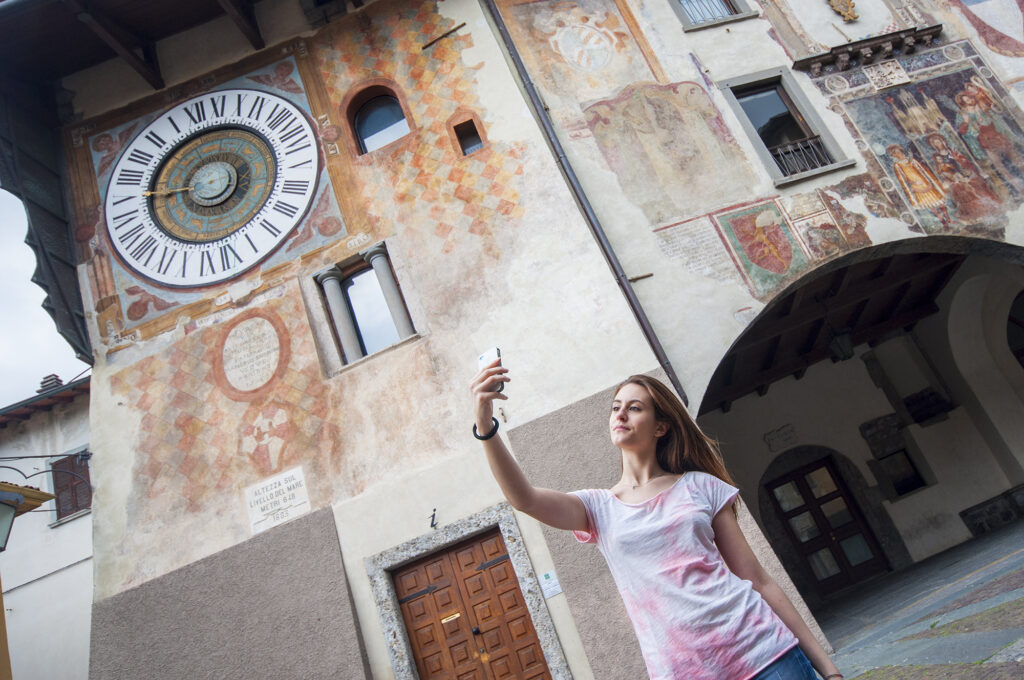
Set in a mighty tower, the Clock is a masterpiece of Renaissance ingenuity and engineering.
Its unique hand indicates not only the hour, but also the day, month, zodiac sign and moon phase of a precise moment, and this with the same parts it had at its inauguration in 1583.
It has been hand-loaded every day since then.
The author of this masterpiece is Pietro Fanzago, a member of a family of foundrymen, architects and engineers active in Clusone since 1360.
The presence of this complex and expensive construction testifies to the importance of the town at the time of Venetian rule, a period characterized by a great wealth of trade between Italy and northern Europe, for which Clusone was excellently situated.
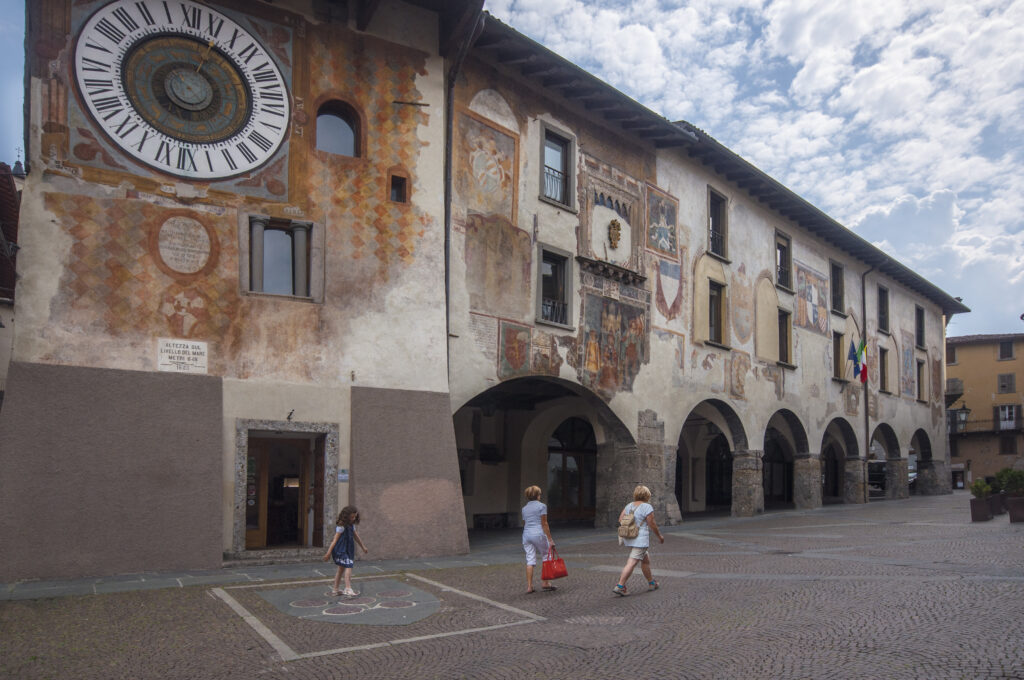
The tower that houses the Clock is part of theMunicipal Building, the construction of which dates back as far as the year 1000.
Architecturally severe in form, it is lightened by the presence of six stone arches and the frescoes that decorate its entire south wall, paintings that narrate important events in the history of the village and the surrounding area.
A curiosity?
The rampant catbird in red shield that appears in various areas is the weapon of the Upper Seriana Valley community.
In the inner courtyard, accessible by walking along the portico from the Clock Tower to the end and turning left, you can discover other testimonies full of charm, such as the carved portal, the airy loggia above it and what remains of other splendid frescoes.
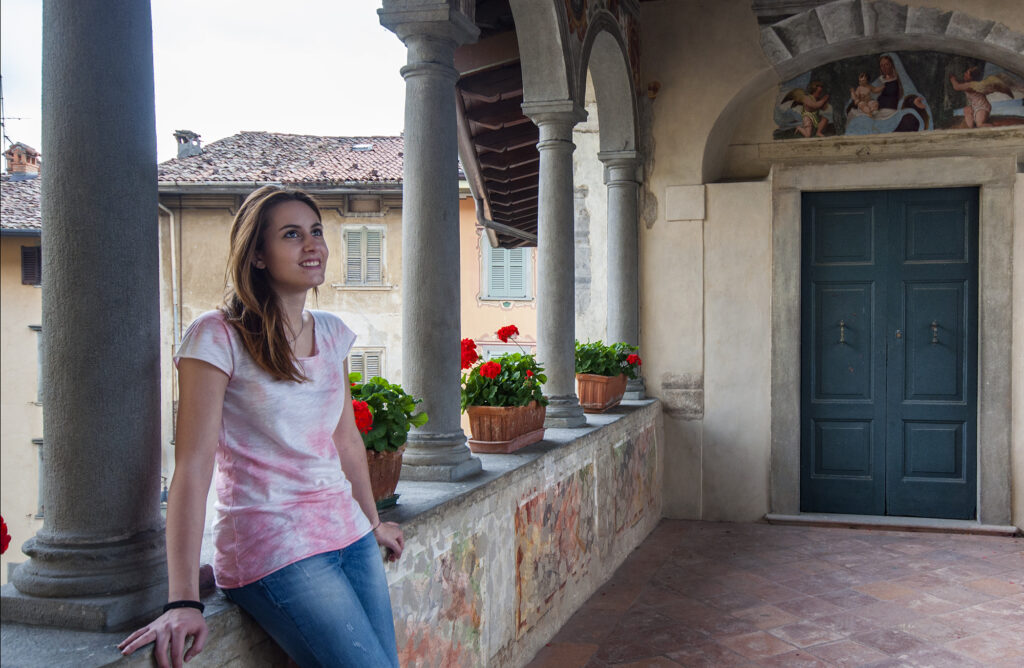
Another special stop awaits you now: as you leave the town hall on Piazza Sant’Andrea, turn left onto Via Ruggero Viti and after about 50 meters a magnificent curving staircase will stand out before you.
It is the most beautiful of the three monumental entrances to the Basilica of Santa Maria Assunta, which has towered over the town with its majestic forms since the 17th century.
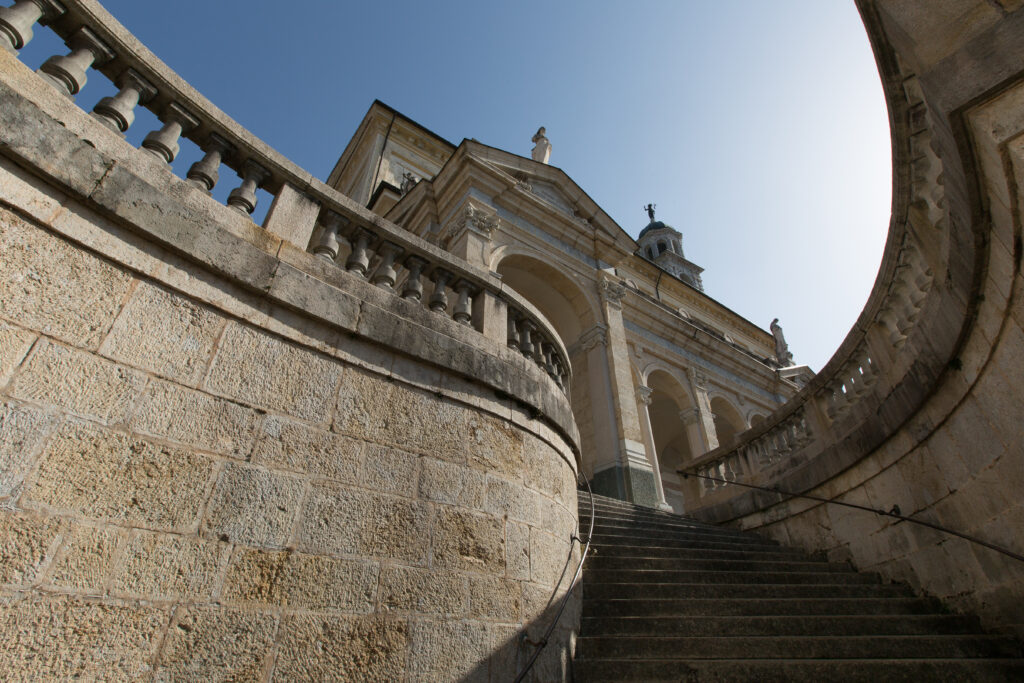
At the top of the steps, you will find yourself under the magnificent loggia flanking the church, built in 1984 to a design by Virginio Muzio.
Inside the basilica are frescoes by Bernardo Brignoli (nave and apse), canvases by Antonio Cifrondi depicting the Last Judgment, l‘Coronation of the Virgin, Musician Angels e Jesus in Gethsemane just to name a few, the Our Lady of the Rosary (1730) by Andrea Fantoni and a 20th-century Stations of the Cross signed by sculptor Cesare Zonca.
The bell tower is located northeast of the church and is more than 66 meters high.
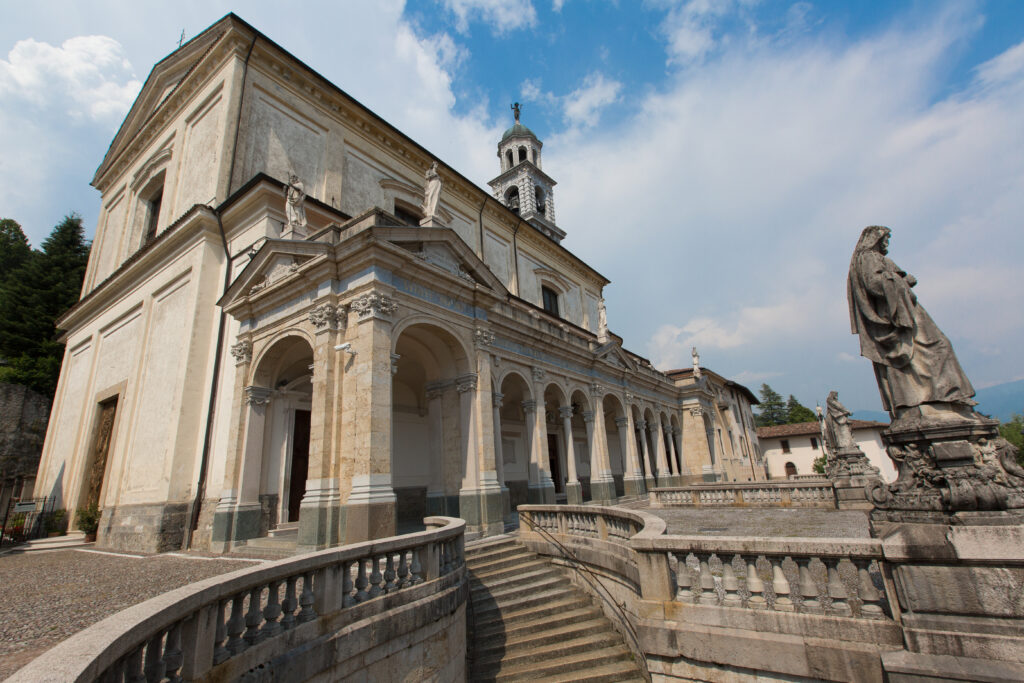
The wide space of the churchyard, raised and decorated by a balustrade with four statues of Evangelists, gives access to another Clusonese masterpiece: theOratory of the Disciplines.
Perfetta dimostrazione del fermento culturale e artistico del medioevo seriano, l’edificio vide posare la sua prima pietra nel Trecento, periodo di cui sopravvive la sola porta d’ingresso ad arco.
L’aspetto odierno risale largamente al Quattrocento, quando la confraternita dei Disciplini (che qui aveva sede) lo ampliò e dedicò a san Bernardino da Siena.
All’esterno potrai ammirare il Triumph of death and the Dance Macabre by the Clusonese Giacomo Borlone de Buschis, who inside painted the Life of Jesus with the Crucifixion.
Sempre all’interno, sulla volta del presbiterio otto edicole esagonali sono affrescate con i Prophets.
Also not to be missed is the magnificent panoramic view that the terrace offers of the city and the surrounding valley.
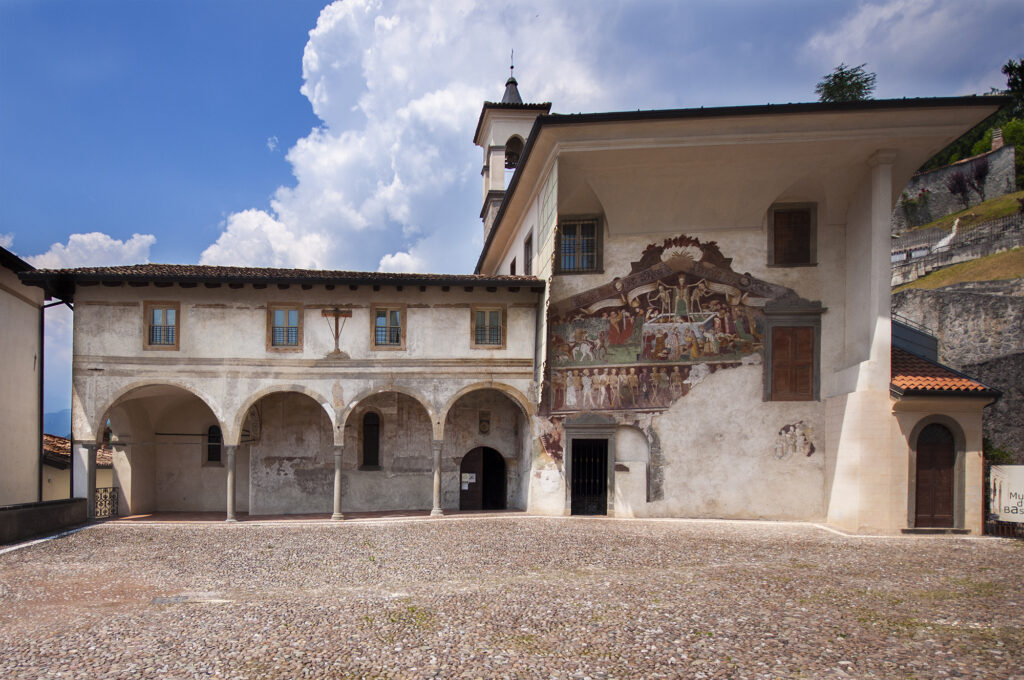
You have almost reached the end of the recommended route.
To conclude it, go back down Brasi Street and, leaving the steps behind, proceed to the right to take Giudici Street.
Continue straight through ancient palaces, cloisters and walls until you return to Piazza dell’Orologio and, from here, take the first right, via Fanzago.
Alla fine della strada, dopo uno sguardo sulla Clusone più slow and secret, you will find yourself on Lattanzio Querena Street, enlivened by numerous stores and typical establishments.
Turning right, take the passage to Piazza della Rocca for a look toward Clusone’s greenest neighborhood.
Continuing straight ahead, you will again meet S. Marco Street and, from there, you can return to the parking lot.

Other available parking spaces can be found at 2 S. Narno Street, behind the Basilica of S. Maria Assunta; at Mazzini Street, Manzù Square, Gusmini Street, and Roma Street, the latter being further downstream than the one recommended in the opening of the itinerary.
If you choose one of these parking lots, or if you reach Clusone by public transportation (streetcar T1 from Bergamo to Albino, then bus line S with drop-off on via Dante) you will start the route from a different area, but don’t worry: you can still get your bearings thanks to the maps of the center placed nearby.